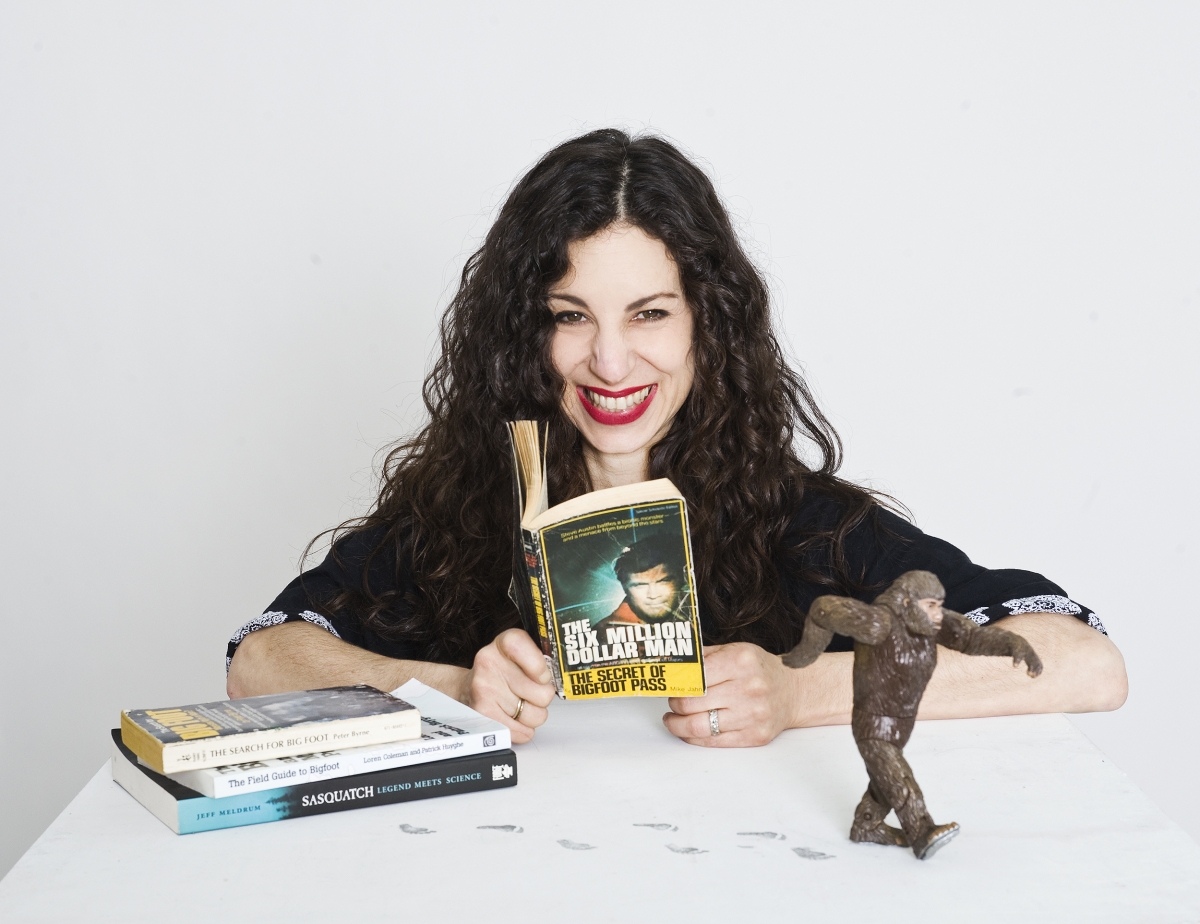
To make a pom-pom poof toy, you take a vast quantity of yarn, wrap it around and around your hand without cutting off blood flow to your fingertips -- a very real danger -- and then knot the bundle around the middle, cut the looped edges, and shake until poofed up.
This activity might strike a chord with some audience members, but one need not have made poofs oneself for the childhood bonds that it represents to ring true. In Cyndi Freeman's one-woman memory play, I Was a Sixth Grade Bigfoot, these yarn toys are one of the ways that the narrator and her soon-to-be-former BFF pass the time together. Freeman, a writer, performer, and burlesque artist, recounts the difficult experience of growing up a creative, misfit child who dreamed of becoming a famous actress and who was perfectly happy to entertain herself, if need be, with solo performances of plays that she had written. She interweaves her accounts of struggles with classmates, friends, and adults with anecdotes plucked from an interest in the Bigfoot mythos that began when she was 11 years old in 1976, crafting a resonant thematic interplay between these two main narrative threads.
Stories of the search for Bigfoot show the narrator's younger self that "searching for something elusive" can be fun. But it is also, of course, not without its costs. I Was a Sixth Grade Bigfoot focuses primarily on the end of the narrator's time in elementary school and the middle school years, including one "year of hell." Much Bigfoot mythology rests its foundations on admitted hoaxes, and young Cyndi learns that parents, teachers, and school officials share with monster hunters a dismaying disinterest in truth, choosing rather to believe what best suits their preconceptions. In the case of Freeman’s being bullied and ostracized, that meant adults indulging a penchant for victim blaming and siding with the claims of the majority over those of the weird kid. The tales of coordinated isolation and aggression at the hands of her classmates movingly capture the absurdist Social Darwinism that characterizes childhood and adolescence (and which survives to govern adult contexts more than we probably like to acknowledge).
Freeman performs Bigfoot on a stage bare except for a trio of books and a small figure of the titular character, and the show doesn’t need anything more. She is a warm, effortlessly enthralling storyteller, even welcoming latecomers specifically into the proceedings and catching them up on the story. The performance starts off feeling like a conversation over drinks but gets to something essential about this kind of experience. Though it takes place mostly during the second half of the 1970s, there is nothing that wouldn't be immediately recognizable, particularly to anyone with a similar background (without projecting too much, one of these reviewers will admit to tears at several points during the performance and spending an hour afterwards cataloging her own adolescent experiences).
Despite some truly painful moments, I Was a Sixth Grade Bigfoot is not all bleak, including notes of forgiveness, sizable doses of humor with its pathos, and, of course, the success of the heroine as an adult: Freeman is in fact a successful actress (and writer and artist). At once heartbreaking and hopeful, this Bigfoot is well worth tracking, whether in the wilds of the Edmonton Fringe Festival or when it hopefully makes its way back to its birthplace in the concrete jungle of New York City. - Leah Richards and John Ziegler
